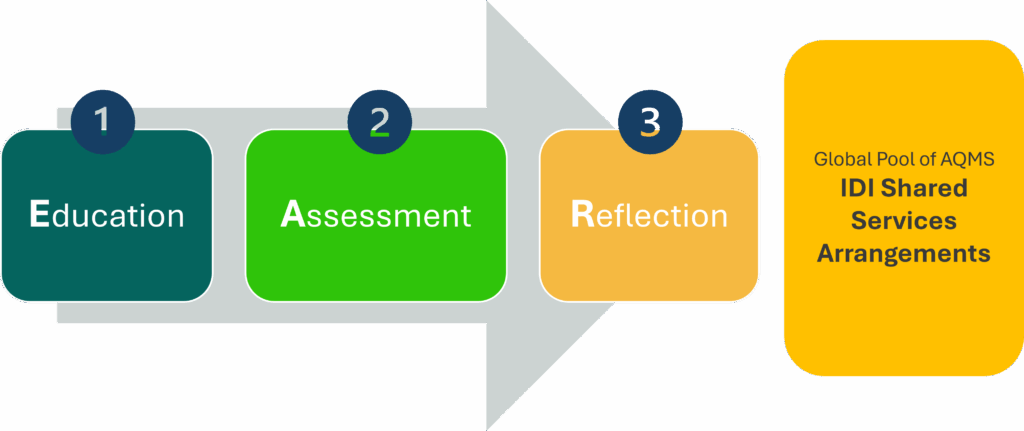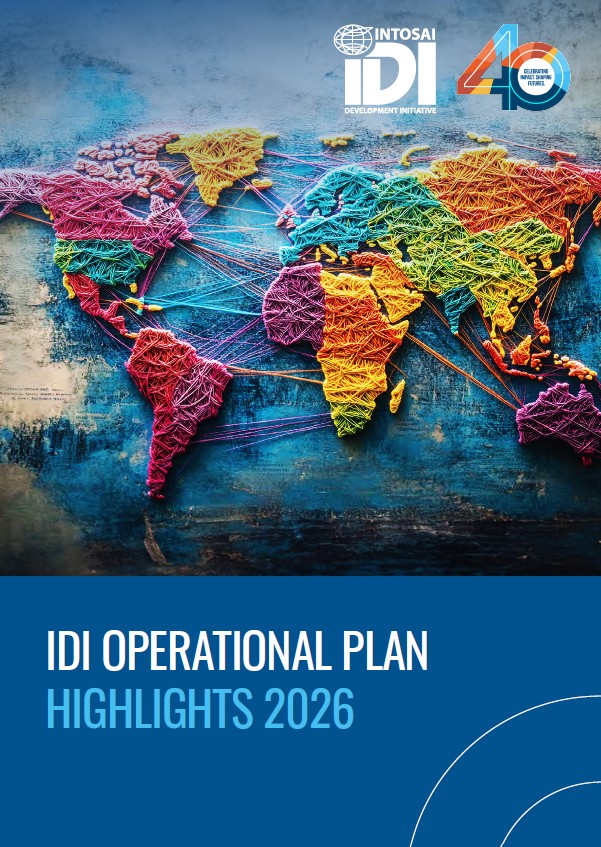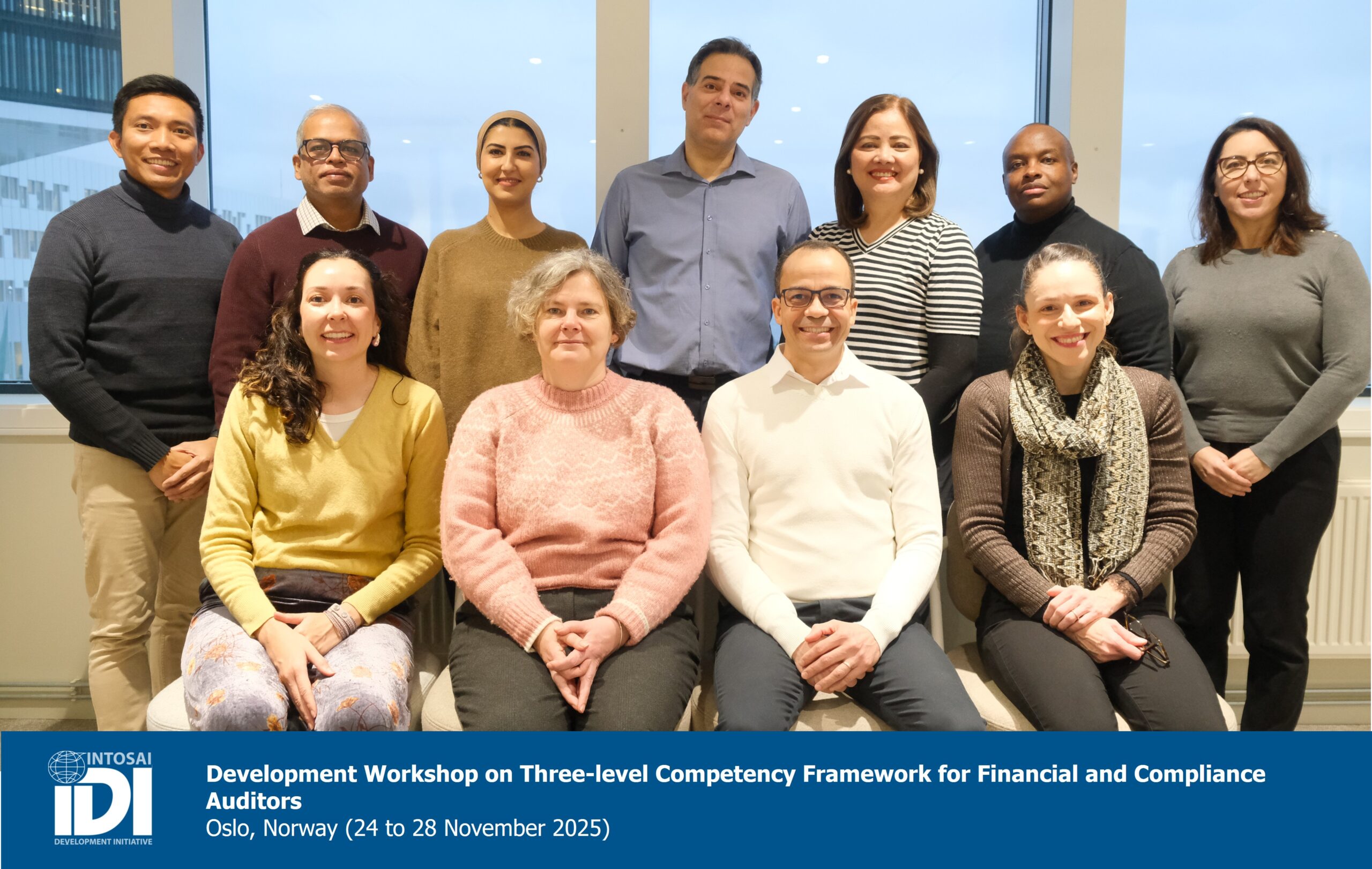AQM – Audit Quality Management Specialist Certificate
What does the AQMS certificate process look like?

1. Education
The AQMS education will give the SAI auditor access to an integrated online platform that offers more than 30 hours of digital education structured around three comprehensive papers:
- AQMS foundational competencies
- Quality Risk Management Process
- Monitoring and Remediation Process
More than just a self-paced education, the learning experience encourages social learning, where participants can connect, exchange ideas, and collaborate with peers and mentors through engaging discussions and activities. Plus, a rich collection of additional resources and tools is available to support deeper exploration of key quality management topics.
Each SAI auditor can choose the area of specialisation. Depending on the specialisation chosen, SAI auditors will need to complete the respective papers, including the Initial Professional Development Portfolio (IPDP) described in the third component of the framework , as is shown:

2. Assessment
On successful completion of mandatory activities (digitised education and completion of the Initial Professional development portfolio) learners will be eligible to take application based assessment exam. Learners who achieve the pass mark of 65% will be awarded a certificate as an Audit Quality Management Specialist.
Assessments can be taken at a Pearson Vue test centre, or where this is not available, through the Pearson Vue ‘OnVue’ system with online proctoring at an approved venue outside of the SAI. Before the actual assessment exams, mock exams will be provided to help SAI auditors in the preparation.
The AQMS Assessments are based on the learning outcomes set out in the education for foundational and specialised topics on Quality Risk Management and Monitoring and Remediation. The AQMS assessments evaluate learners through a computer-marked exam:
Paper |
Assessment Exam Pass rate |
|
Foundational Competencies |
at least 65% |
|
Specialised or Monitoring and Remediation) |
at least 65% |

3. Reflection
The reflection aspect is where everything begins to come together. It gives learners the space to internalise what they’ve learned and make meaningful connections between the technical concepts covered in the education component and their practical application within their own SAI. Reflection is not an afterthought, it is a key step that helps learners move from understanding to ownership, from theory to practice. Both the education and the assessments will provide opportunities for the learners to improve their ability to exercise professional judgement.
As part of this process, learners will document their insights in the Initial Professional Development Portfolio (IPDP). This portfolio serves as a personal learning record and planning tool, enabling learners to think critically about how their new knowledge and skills can be adapted and applied within the unique context of their SAI. To support this, a set of guiding questions will be provided to help frame their thinking and encourage deeper reflection. These questions will prompt learners to explore not just what they’ve learned, but how it can be embedded into their systems, structures, and day-to-day work, in relation to their facilitatory role as AQM Specialist.

Once learners have worked through the technical concepts—engaging with exercises, case studies, and practical examples—learners will then be asked to reflect on how these concepts translate into action. They’ll consider how to tailor the implementation of quality management principles to their current organisational realities, including existing human resources, institutional structure, and operational culture.
This reflective process invites learners to begin sketching out how the different functions of the System of Audit Quality Management might be set up in their SAI. They will be encouraged to think through questions such as: Who would take responsibility for which functions? How might existing roles be adapted or redefined? What methodologies might be appropriate and realistic for their setting? How would the key processes unfold in practice, and what kind of documentation would be needed to support them?
This exercise is not meant to be a full implementation plan, but rather an initial, thoughtful exploration of how their learning might take root. It’s about starting to imagine what change could look like on the ground.
To ensure the quality and relevance of these reflections, a sampling of learner portfolios will be reviewed. This review will assess both the completeness of the entries and their relevance to the objectives of the certification. The aim is to encourage meaningful engagement and support learners in using the IPDP as a practical tool that not only captures their learning journey but also guides their next steps in strengthening audit quality within their SAI.

